Tote bag organizers have become a popular accessory for those who want to maximize space and keep their belongings neatly arranged. Whether you are a wholesaler, retailer, or sourcing manager, understanding the materials used in tote bag organizers can help you choose the best products. This article will explore the most common materials used in tote bag organizers and their benefits. Let’s dive in!
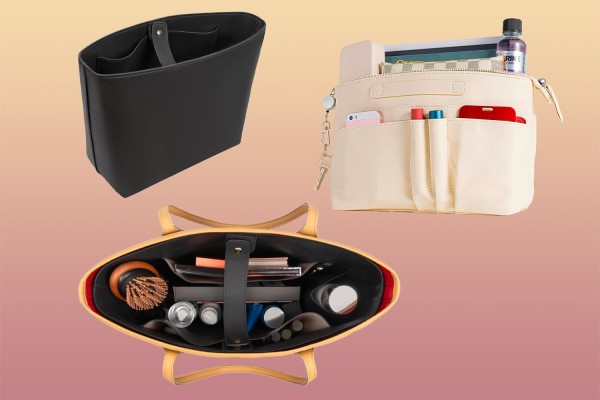
1. Introduction: The Growing Popularity of Tote Bag Organizers
Tote bag organizers are a growing trend in retail and wholesale markets. With the rise in demand for functional and stylish accessories, tote bag organizers provide a practical solution for keeping everything in place. These organizers are designed to fit inside tote bags and help keep items like phones, keys, cosmetics, and wallets neatly arranged.
2. Market Trends and Statistics
The global tote bags market has been experiencing steady growth. As sustainability becomes a key focus for consumers, the demand for eco-friendly tote bag organizers is also rising. Here’s a quick look at some important market trends:
- Global Market Size: The tote bag market was valued at $5.22 billion in 2023 and is expected to grow at a CAGR of 6.2% through 2024.
- Projected Growth: By 2028, the market is forecasted to reach $7.08 billion.
- Consumer Preferences: A significant shift towards sustainable and customizable products, push the demand for eco-friendly tote bag organizers.
| Year | Market Size (USD) | CAGR (%) |
|---|---|---|
| 2023 | $5.22 billion | – |
| 2024 | $5.54 billion | 6.2% |
| 2028 | $7.08 billion | 6.3% |
| 2032 | $39.59 billion | – |
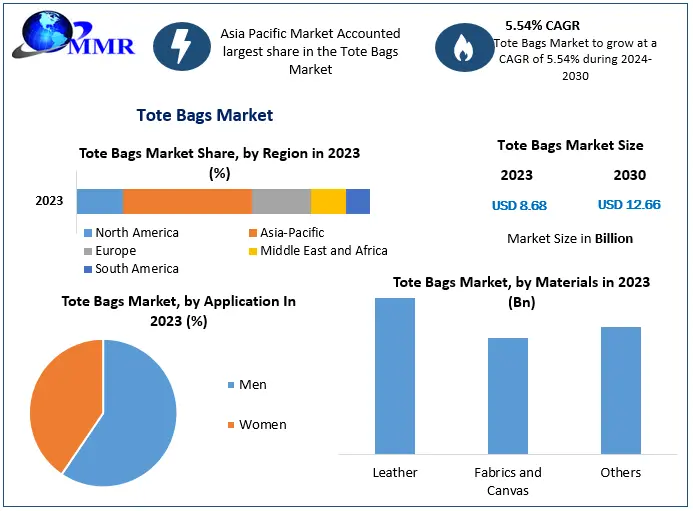
3. Key Materials Used in Tote Bag Organizers
The materials used to create tote bag organizers directly impact their functionality, durability, and appeal. Here are some of the most common material options:
- Cotton: Known for its eco-friendly properties, cotton is a popular choice for sustainable tote bag organizers. It’s soft, breathable, and easy to clean, making it ideal for environmentally conscious consumers.
- Polyester: A durable and easy-to-clean material, polyester is often used in tote bag organizers because of its affordability and flexibility. It’s also highly resistant to wear and tear, making it a great choice for daily use.
- Nylon: Nylon is known for its strength and resistance to abrasion. It’s a great material for organizers that will carry heavier items or face more wear over time. Nylon is also resistant to water, adding to its durability.
- Felt: Felt is a premium material that gives a luxurious feel to tote bag organizers. It’s softer than other materials and is often used in high-end designs.
- Non-Woven Fabrics: These fabrics are lightweight and cost-effective, making them perfect for budget-friendly organizers. They also offer versatility and can be easily customized with prints and logos.
4. Durability and Performance: Choosing the Right Material for Organizers
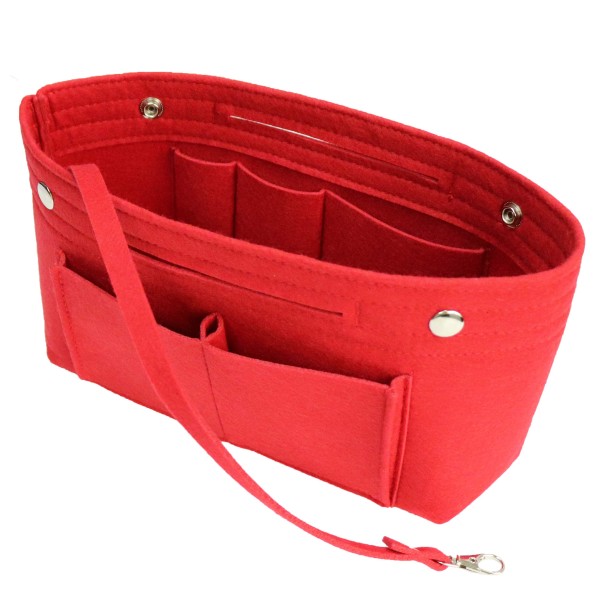
The material you choose for tote bag organizers affects their durability, performance, and longevity.
- Cotton: While eco-friendly, cotton may wear out faster than synthetic materials. However, it is great for lighter loads and is easily washable.
- Polyester: Offers high durability at a lower cost. It can handle medium to heavy loads and resists stains and wrinkles.
- Nylon: Known for being extremely durable and abrasion-resistant, nylon is the best choice for organizers carrying heavy or sharp objects. It can withstand frequent use and harsh conditions.
- Felt: Felt is softer but can wear down with heavy use. It’s more suitable for delicate items and light-duty organizing.
- Non-Woven Fabrics: Lightweight but less durable, non-woven fabrics are great for temporary or promotional use but might not last as long with heavy usage.
5. Cost Considerations: Material vs. Price in Tote Bag Organizers
Cost is crucial in deciding which material to choose for tote bag organizers. Here’s how different materials compare:
- Cotton: Typically more expensive than synthetic options but is an eco-friendly choice.
- Polyester: A cost-effective material that balances between durability and price.
- Nylon: Slightly more expensive than polyester but offers superior durability.
- Felt: Often the most expensive option due to its premium feel and manufacturing process.
- Non-Woven Fabrics: The most budget-friendly option for large volumes and cost-conscious projects.
Finding the right balance between price and quality is essential for business. Depending on your target market and product positioning, you may opt for more durable materials or affordable options.
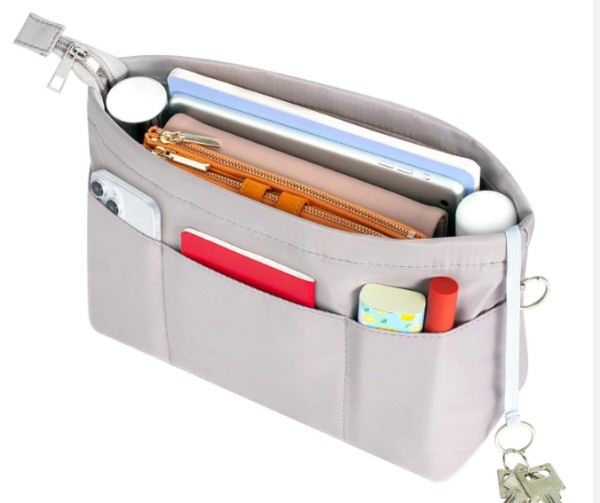
6. Customization Options: How Materials Affect Design Flexibility
Customization plays a big role in the tote bag organizer market, especially for businesses looking to create unique products for their customers. The material you choose affects how easily the organizer can be customized:
- Polyester and Nylon: These materials are great for branding and can handle custom prints, logos, and embroidery.
- Cotton: Cotton is versatile and can be printed on easily, making it a good choice for businesses looking for eco-friendly and customizable options.
- Felt: While felt offers a luxurious feel, it may be less customizable for heavy printing or complex designs.
- Non-Woven Fabrics: Highly customizable with prints, logos, and other designs, making them popular for promotional items.
Polyester and nylon offer the most flexibility to businesses looking to personalize their products for branding or marketing purposes.
7. Frequently Asked Questions (FAQs)
What materials are commonly used for tote bag organizers?
The most common materials are cotton, polyester, nylon, felt, and non-woven fabrics. Each material offers unique benefits depending on the use case.
How do I choose the right tote bag organizer?
When choosing a tote bag organizer, consider factors like size, the type of items you need to organize, and your budget. Materials like nylon and polyester are ideal for durability, while cotton and felt are better for eco-friendliness and a premium feel.
Are tote bag organizers customizable?
Yes, many tote bag organizers are highly customizable, especially those made from polyester, cotton, and non-woven fabrics. Businesses can add logos, branding, and custom designs to make their products stand out.
What are the benefits of using a tote bag organizer?
Tote bag organizers help keep everything neatly arranged, making it easier to find what you need quickly. They also maximize space within the bag, making it more efficient for carrying daily essentials.
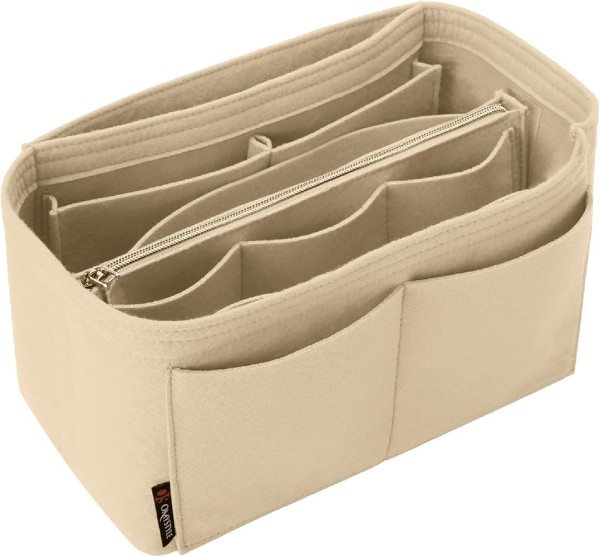
Conclusion: The Future of Tote Bag Organizers
As demand for tote bag organizers grows, businesses should carefully consider the materials that best align with their customer’s needs and preferences. By choosing the right material, you can offer a durable, customizable, eco-friendly product that stands out in the marketplace.
If you’re looking for high-quality tote bag organizers, Hefei Airscape Textile Trading Co., Ltd. offers a wide range of materials, designs, and customization options to meet your business needs. Visit our website at airscapebag.com to learn more and explore our products. 6232 0311 2400 0040 992
For more insights into eco-friendly materials, explore our other blog posts Eco-Friendly Promotional Bags: How Sustainability Can Enhance Your Brand, and discover sustainable solutions for your business.

